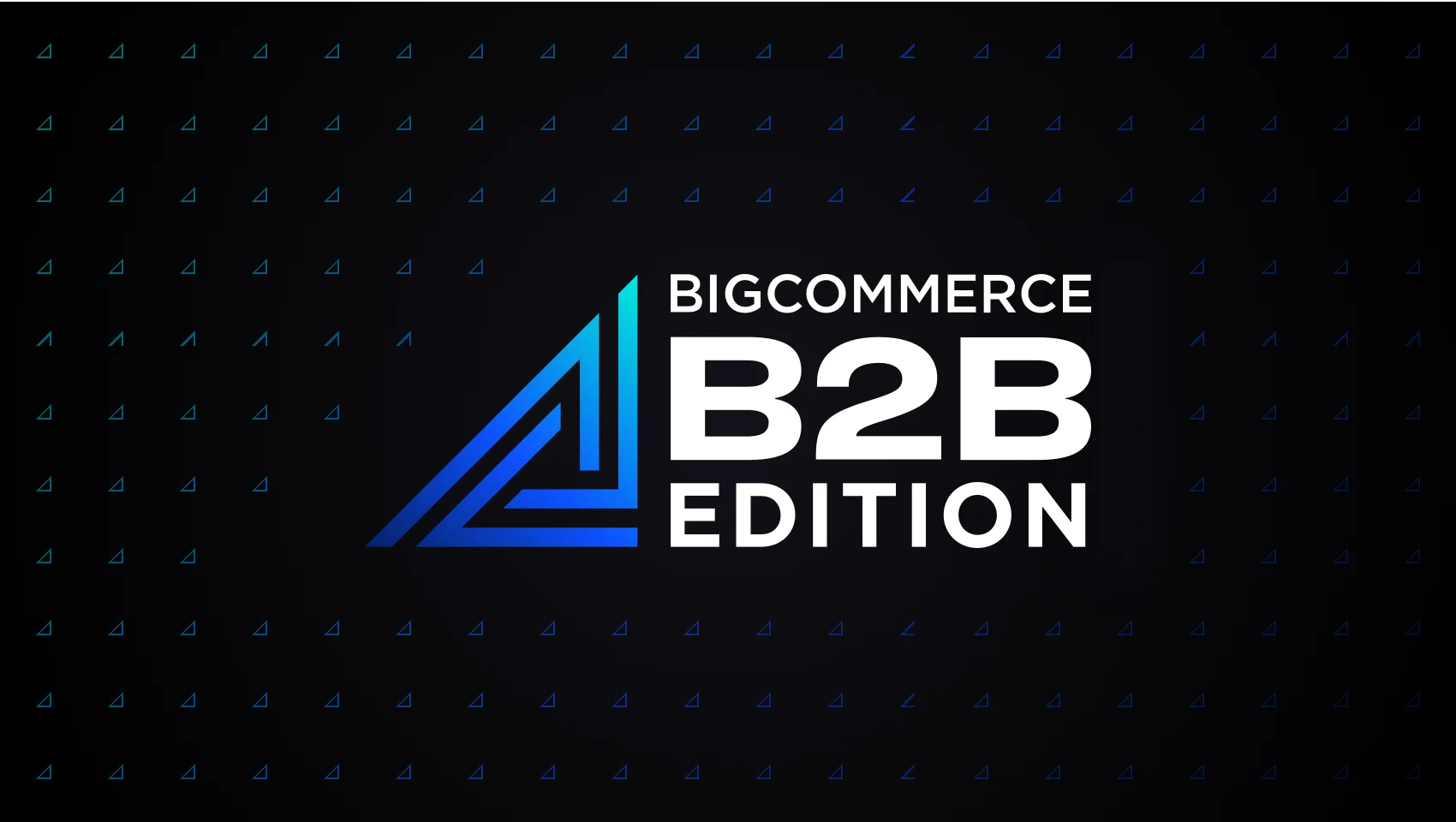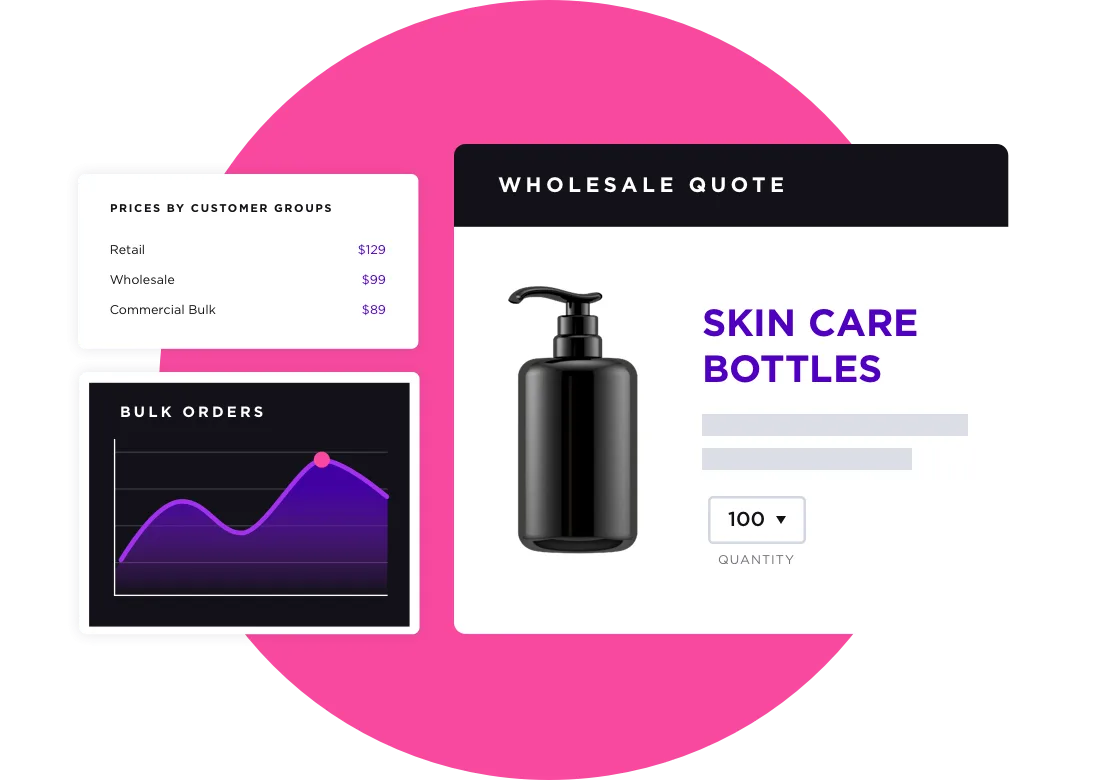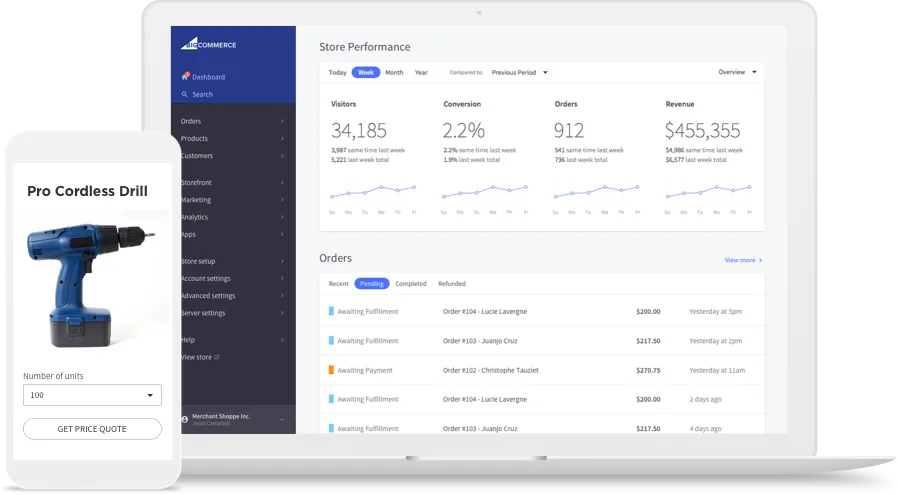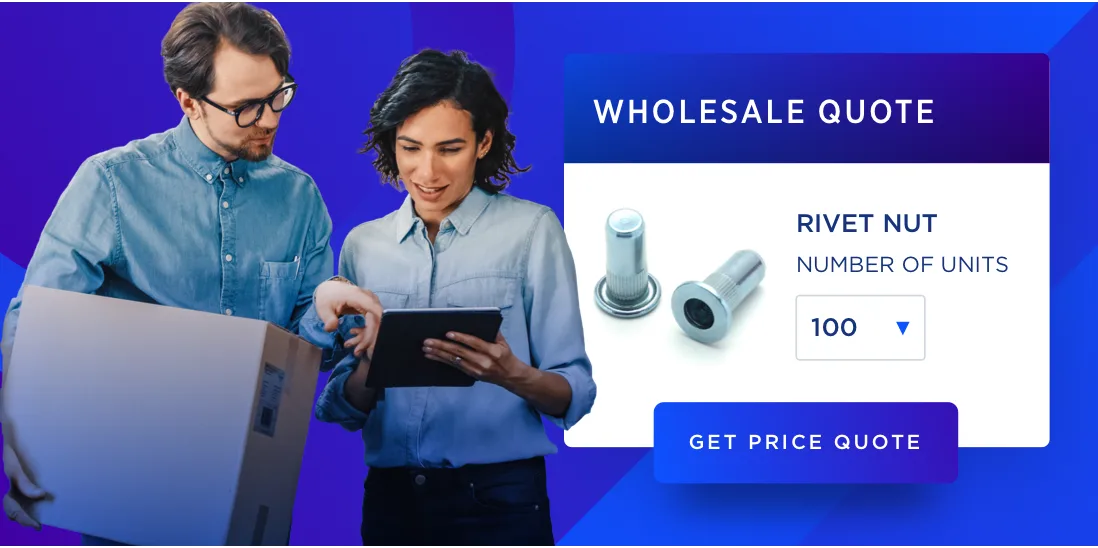
Grow with B2B Edition
More flexible than other SaaS platforms. Easier and faster than legacy solutions.

How to Find the Right B2B Ecommerce Solution: Q&A with Brilliance

In the past, many B2B businesses have been slow to adopt ecommerce. One eMarker report forecasted that only 9% of total B2B US product sales occurred via an ecommerce website.
However, the pandemic has served as a catalyst for many B2Bs to accelerate their digital transformation. For instance, eMarker also reports that the average company revenue share driven by ecommerce before vs. during COVID-19 increased 23% on average.
Complex needs can turn into reservations about selling online or wariness about replatforming from a custom-built or monolithic solution.
But these fears don’t have to stand in the way of success. We’ve reached out to Lori McDonald, CEO at Brilliance Business Solutions, to help shed some light on how to find the right B2B ecommerce solution.
For those who have never had a B2B ecommerce solution, what are their main objections to selling online?
Lori McDonald:
One reason, which is becoming less common now but I certainly still hear from B2B businesses, is that their customers don’t buy that way. Because products are really complex, people need to talk to a sales person — they’re not going to place an order online. I do think that rationale is changing.
Some other hurdles are the fear that ecommerce will compete with their sales team. Many manufacturers and distributors have built their business on their sales team. That has been their path to success, and they don’t want to do anything that’s going to jeopardize what’s working for them.
One other hurdle that exists is that oftentimes these organizations don’t have digital expertise internally. They’ve never had to sell online before and don’t have the past experience with B2B ecommerce software. From this perspective, there are certainly strategies, as well as ecommerce features and functionality, that can help make the transition easier.

What do you recommend they do to overcome these challenges so that they can start selling online?
Lori McDonald:
What I recommend to organizations that have never sold online before is to get started selling something online. It might initially be a parts store, or you can find some segment of your products that you’re going to start selling. This will enable you to get some experience internally that you can learn from and continue to build upon.
And that’s one of the great things about BigCommerce’s B2B ecommerce solution. The platform enables you to get started and try some things out; then, scale your investment over time.
On a related note, sales team buy-in is so important. Some sales teams, or even owners, have the mindset that ecommerce means replacing salespeople or that you won’t need them anymore. That mindset is a myth. Ecommerce doesn’t replace salespeople. Done right, it supports them. Your salespeople are so important. An online store is a tool for your salespeople to help them do their job more easily and help them sell more.
How does BigCommerce’s B2B ecommerce software make it easy for those with less experience to get started?
Lori McDonald:
There are numerous features and functionalities within the BigCommerce platform that can help mitigate some of the challenges of selling online for the first time.
For instance, contract pricing and custom pricing for customers has been a part of BigCommerce’s naitive functionality, even before B2B Edition. It’s really great because you can allow customers to log in and see a specific price that’s unique to them.
Thinking about your sales team and reinforcing that customer relationship, BigCommerce B2B Edition is helpful as multiple users can log in per account; sales people can set up quotes for customers or customers can request their own quotes and customers can purchase from a list.
Those are B2B ecommerce software features that support the customer’s relationship with sales and enable your ecommerce site to become an extension of your sales team.

For businesses already online but looking for a new B2B ecommerce solution, what do you recommend they prioritize?
Lori McDonald:
Understanding the capabilities the platform has that align with strategies that are going to help you make more money. So if you think about your roadmap and what you want to accomplish in the B2B space — it may be that you want to enable punchout or leverage new email marketing capabilities — make sure you look for a platform that has connectors to other systems, which will make the process straightforward and less resource intensive.
Also, prioritize a B2B ecommerce solution that’s going to be easy for your marketers, salespeople and admins to use, without having to contact their IT team. I know many companies still use a legacy solution that may be custom built or homegrown. But the challenge is it’s often limited by what a marketer can edit and change in order to promote new products or accomplish other tasks quickly.
While you may have an internal development team, it’s much better to use them for some really great innovative new features that are going to improve the customer experience versus doing things that a platform could support your team in doing.
What do you see as the main values of multi-tenant SaaS over monolithic or legacy B2B ecommerce software?
Lori McDonald:
Well, there’s a few things. First, low total cost of ownership. For instance, let’s say you want to add a new feature, or there’s a new browser version out that you need to support. With a legacy or custom-built solution, you might find yourself in a situation where you’re continuously spending your development resources to ensure that you’re supporting a new feature or browser version — or simply keeping the platform alive.
In my experience, we’ve had platforms that we worked with where merchants might spend $100,000 to get the site set up, and then spend $50,000 every time they wanted to upgrade — simply because it was just so customized. Instead, companies are better off spending their resources on innovative new features that can drive revenue.
The other reason I think that there’s a real benefit to multi-tenant SaaS comes back to the idea that ecommerce solutions like BigCommerce are continually adding new features, functionality and capabilities that organizations get to take advantage of without doing any additional development work on their part.
That’s not going to be true if you have a custom-built solution. And even in the case of other platforms on the market, if your development team or an outside development partner has to spend weeks or months working on the upgrade to benefit from the features, oftentimes you will not get to the latest version because of the costs involved.

How does Brilliance Business Solutions help companies make the transition from a legacy or custom-built platform to a SaaS B2B ecommerce solution?
Lori McDonald:
One of the biggest challenges for many organizations that have a custom-built application or legacy solution is they don’t necessarily know all of the features and functionality they’ve built over time. Or they might know, but because it was customized progressively over time, they don’t have it well documented.
So what we do at Brilliance Business Solutions is bring in our team of business analysts and software architects who will help identify technical requirements, including ERP integrations and specific business rules, and then, we put together a technical plan that helps get merchants up to speed on their new B2B ecommerce solution — on time and on budget. We even have an on time and on budget guarantee.
It can be scary for organizations moving to something new, and for good reason. There’s anxiety around IT projects like this because there have been a lot of instances of them going awry. So knowing that you’ve had an entire team that has done this kind of work multiple times before builds confidence.
There’s been a lot of debate about headless as an option for B2B. What is your take? Do you think B2B ecommerce businesses want headless?
Lori McDonald:
I think it really depends on the company. Headless commerce typically makes more sense for larger enterprises that have already made sizable investments in an enterprise CMS, and they don’t want to replace it; they just want to add commerce functionality into it.
So while there is a business case for headless, to me, the challenge is that it’s more expensive to implement. You lose some of the lower total cost of ownership benefits.
For organizations who have never done ecommerce before and they’re just getting started, assuming they’re less than a $500 million company, I don’t see a lot of people choosing to start with headless in that scenario. I think it’s usually the larger enterprises that have a system in place that they can’t replace, but they want to extend.
Get Start with a B2B Ecommerce Solution from BigCommerce
Ready to take the plunge and start selling online with a B2B ecommerce solution designed to set you up for success? Then, check out BigCommerce B2B Edition. You’ll find all the features you need to cut through complexities and make B2B selling simple.

Shelley Kilpatrick is an accomplished content marketer who creates compelling, original content designed to educate and empower ecommerce businesses. She is currently Manager of Content Marketing at BigCommerce where she leads a world-class team of content writers and strategists. Outside of work, she loves exploring all things Texas BBQ and craft beer with her husband and two dogs.